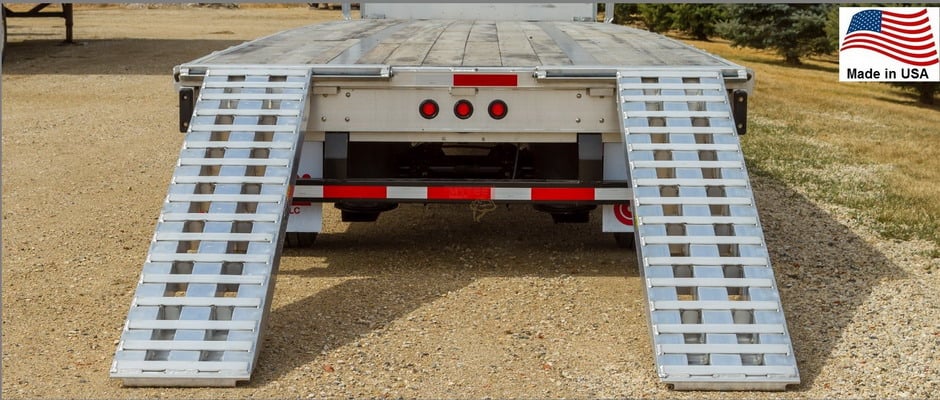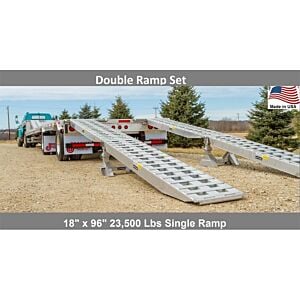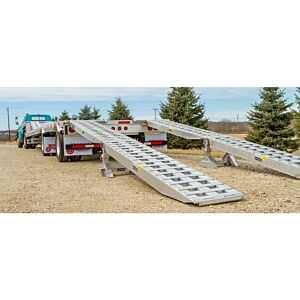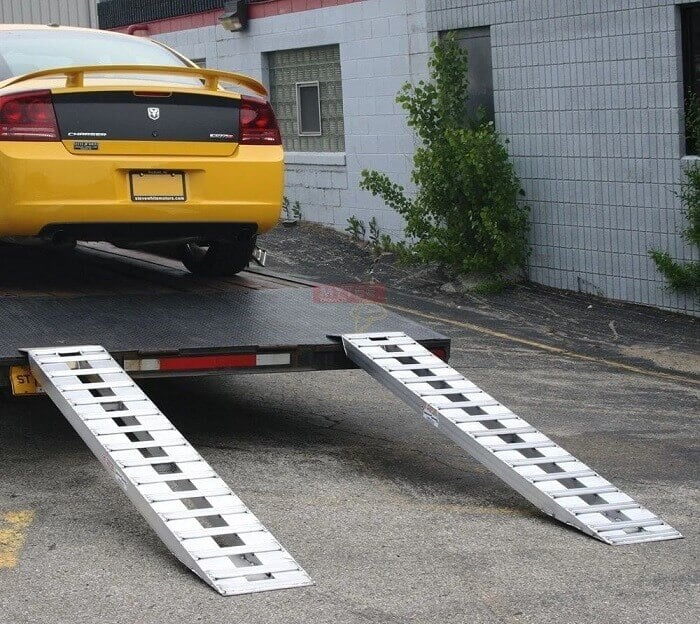Flatbed trucking does not take a break during the winter. It may slow down for certain kinds of loads, but flatbed truckers keep the wheels moving year-round. That means they have to adapt the way they work to account for potentially dangerous winter conditions. Consider the possibility of using trailer loading ramps in winter to get a piece of heavy construction equipment onto the back of a trailer.

Regardless of weather conditions, loading ramps should be deployed with care. That’s why manufacturers recommend being extremely cautious. In the winter time though, the hazards normally associated with loading ramps are exacerbated by snow, ice, and even cold temperatures. Truck drivers have to be extra careful.
Below are some helpful tips that could make a real difference should you have to use your loading ramps during the coming season.
1. Wear Heavy-Duty Gloves
You should always be wearing gloves when you are working with your loading ramps. In the winter though, gloves are even more important. Cold temperatures can make your hands go numb pretty quickly. A good pair of gloves, would prevent any physical harm.
The other thing to remember is that loading ramps themselves will be extremely cold. Working without gloves could lead to frostbite. If your skin is wet or damp when you first touch a loading ramp, it could freeze to the surface of the metal. That would not be a fun situation to be caught up in. The point here is that heavy-duty gloves are non-negotiable during the winter.
2. Ramps Should Be Free of Ice
Before any loading takes place, your ramps should be completely free of ice and snow. You can use a commercial deicing product in the form of a liquid or spray to keep them clean. Some truck drivers carry a rubber mallet in the toolbox instead. A couple of whacks with the mallet will get rid of ice pretty quickly.
3. Look for Clean, Dry Surfaces
You know enough about truck loading ramps to look for flat, level surfaces on which to deploy them. The flat and level rule still applies during the winter. But let us go one step further. You should also look for surfaces that are clean and dry. Otherwise you risk the very real possibility of your loading ramps shifting on you.

Where loading ramps meet the ground, you should have a clean and dry surface to work with. If there is any snow or ice in the way, remove it first. The extra work involved here is worth it from a safety standpoint. Just ask anybody who has lost a load underneath loading ramps that shifted on the ice.
4. Consider a Single Piece Ramp
Winter is a good time to use single piece ramps instead of dual ramps. A single piece ramp is not always possible, but you should consider it for those jobs when it’s doable. A single piece ramp is just safer. Fewer things can go wrong because you are only working with one ramp. Obviously, you’re not going to carry a single piece ramp in your trailer. That means you will have to ask the shipper or receiver if they have one.
Winter weather is fast approaching. Please be cautious and account for current weather conditions while you work. Everyone wants you to be safe out there, including the entire Mytee Products team.














